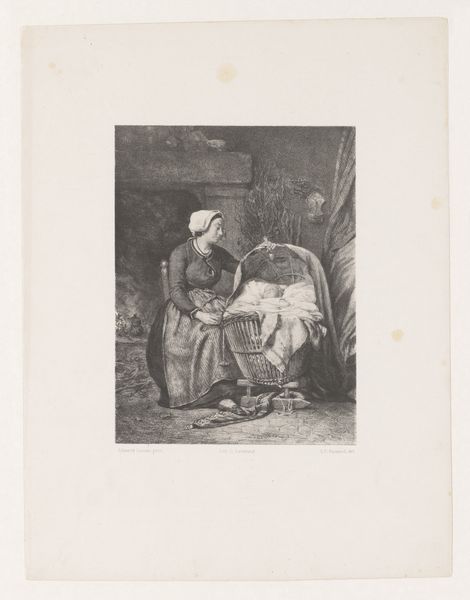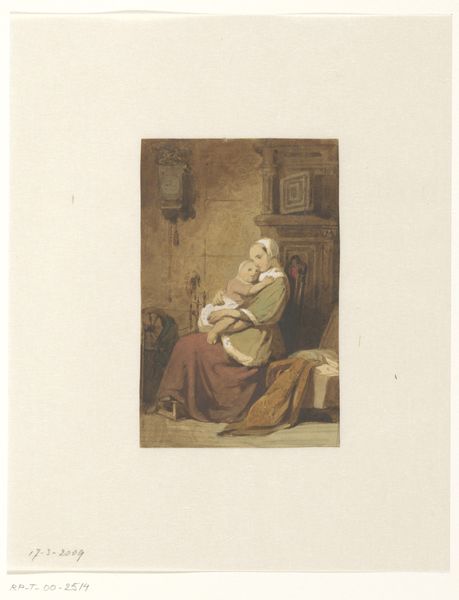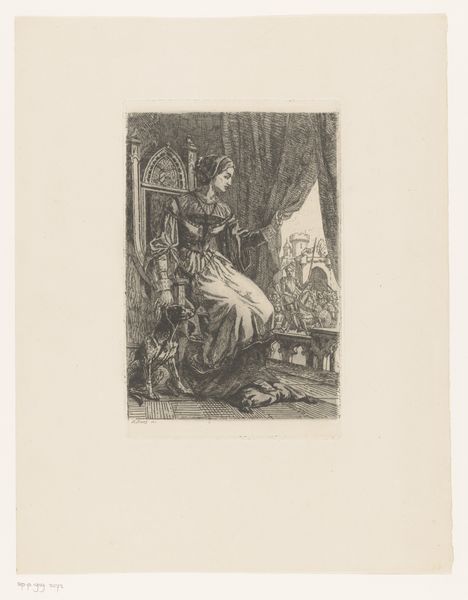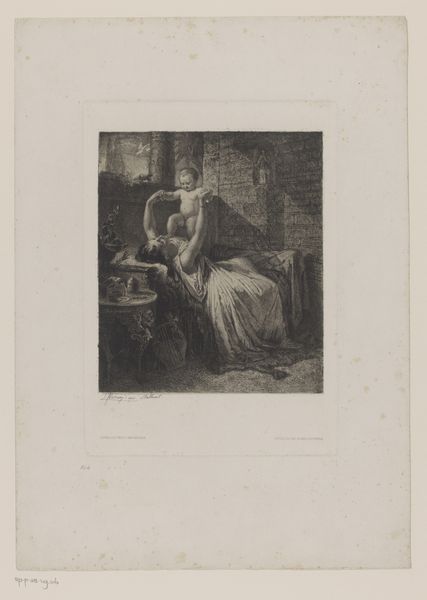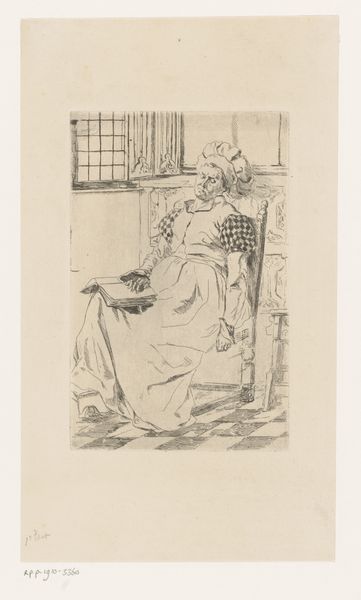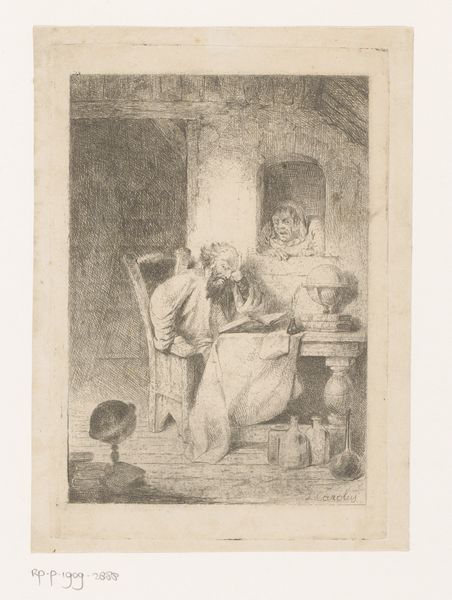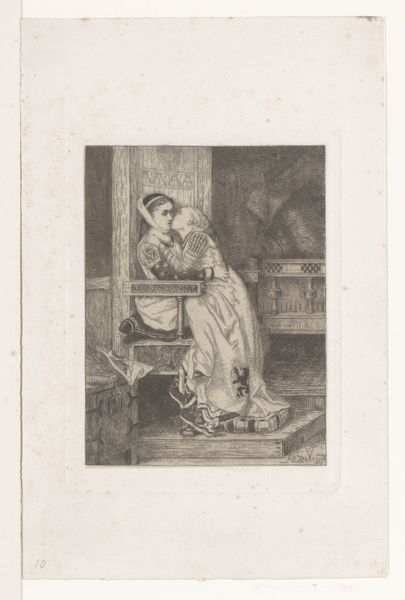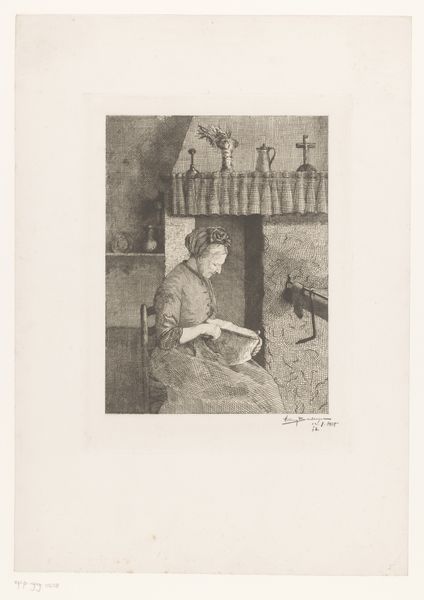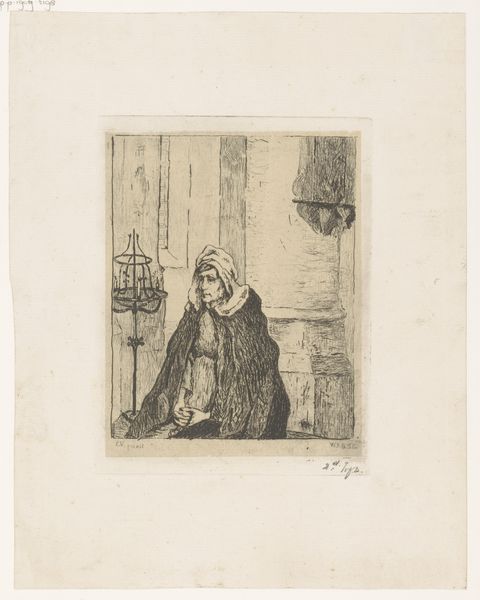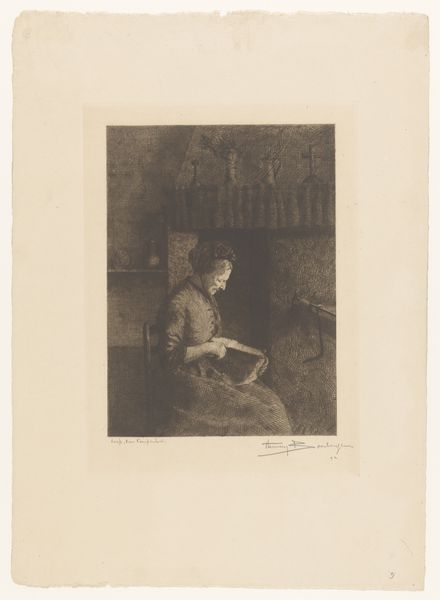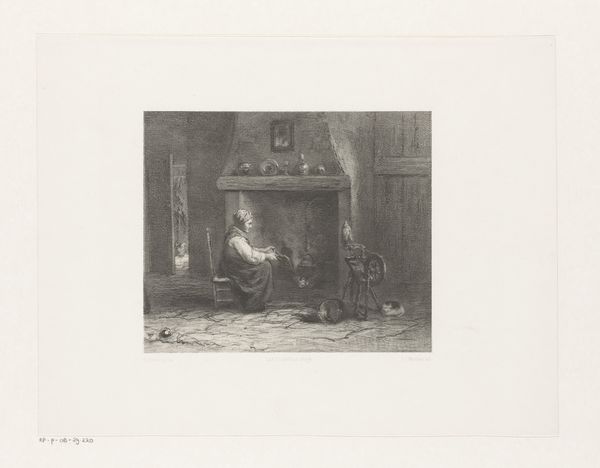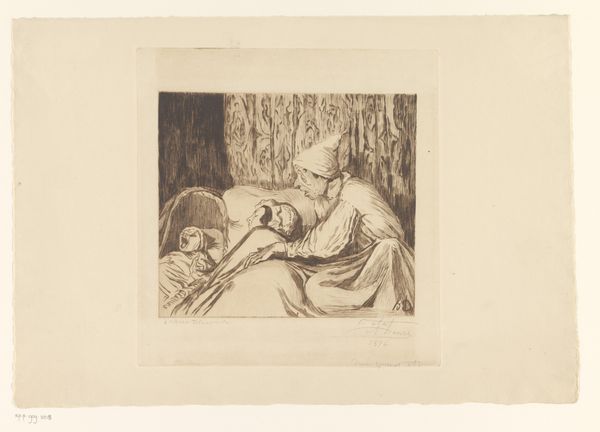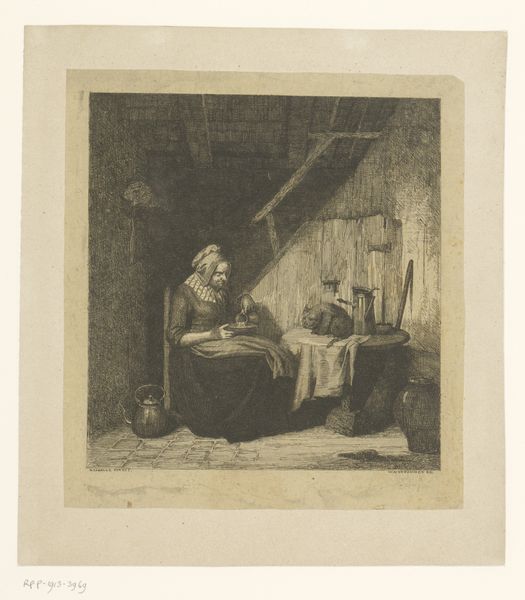
Dimensions: height 174 mm, width 122 mm
Copyright: Rijks Museum: Open Domain
Editor: This is Felicien Rops’ "Vrouw aan een spinnewiel" or "Woman at a spinning wheel," created in 1876. It’s an etching, isn’t it? It feels very… contained, domestic. What do you see in this piece, beyond the obvious genre scene? Curator: The obvious can be deceiving! Look at the date: 1876. What was happening then for women, especially working-class women? Think about industrialization. Editor: Okay, so industrialization is drawing people away from these traditional crafts... Curator: Exactly. This image, seemingly innocuous, becomes charged. Rops, often associated with more…provocative subject matter, here seems to offer a comment on the disappearing role of women in production. She's almost fading into the background, swallowed by the shadows. Notice the angle of her head. Does she make eye contact with us? Editor: No, she doesn't. It is as if she is disappearing into her labor. It seems the domestic space which had always been female owned, is changing for the times. Curator: And who benefits from this change? Consider the male-dominated factories rising at the time. The work available was very often gendered, and very often in favor of males. Her lack of presence challenges the patriarchal narratives developing, by showcasing her dwindling industry. What do you think about the darkness? Is there a symbolic meaning there? Editor: Well, the spinning wheel itself evokes stories like Sleeping Beauty, but here the fairy tale feels much darker. There's a melancholy, a sense of loss in the darkness that the wheel casts, hinting at something bigger, a social commentary maybe? Curator: Precisely! It encourages us to question whose stories are told, and whose are erased in the march of “progress." Thank you, I think this artwork is best seen within these complex, societal frameworks that provide more social and cultural nuance. Editor: This piece definitely has more to say than meets the eye. Considering social changes really does reframe how we view what appears, at first, like a standard scene!
Comments
No comments
Be the first to comment and join the conversation on the ultimate creative platform.
